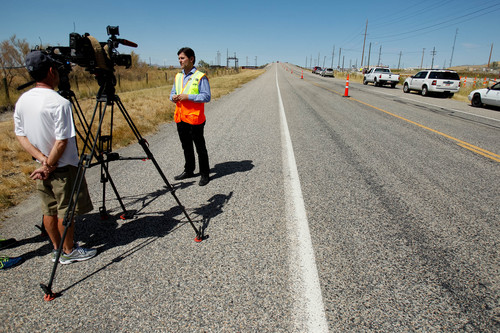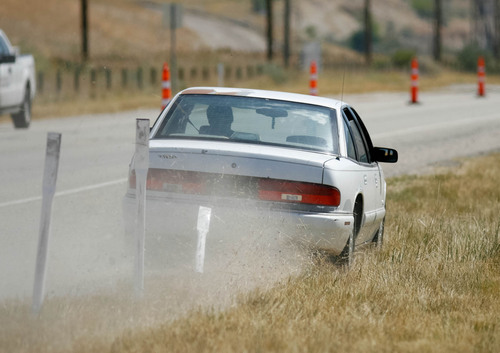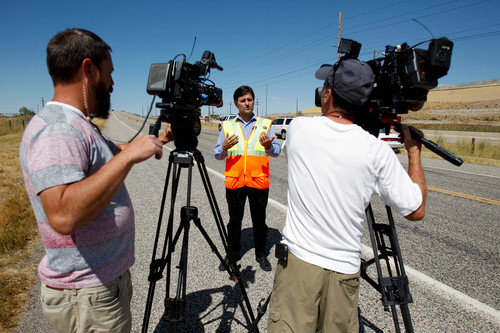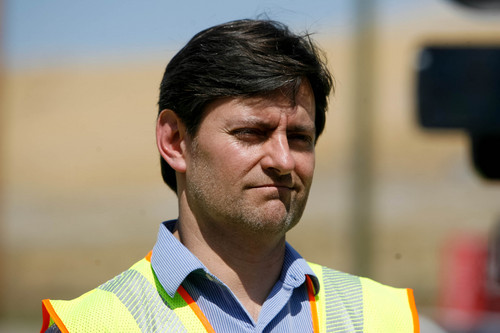This is an archived article that was published on sltrib.com in 2013, and information in the article may be outdated. It is provided only for personal research purposes and may not be reprinted.
Nearly half of this summer's fatalities on Utah roads were caused by rollover crashes. Officials worry too many of them may have resulted from people overcorrecting and swerving to avoid hitting the small plastic poles topped with reflectors that line most state highways.
Robert Hull, director of traffic and safety for the Utah Department of Transportation, demonstrated Thursday that those poles are designed to fall over and pop back up when hit — so drivers need not swerve around them in emergencies.
He accelerated to 45 mph on remote State Road 202 near the Great Salt Lake in Magna. He left the side of the roadway, as some drivers do when they are drowsy or distracted. Instead of swerving around reflector poles, he drove through them and back onto the highway.
"It definitely makes some noise when you hit them. But they are intended to flex, and there was nothing that hung me up," he said. It did no noticeable damage to the car — or the reflector poles for that matter. "And it's definitely better than rolling," he said.
UDOT held the news event to talk about what it calls the 100 deadliest days on Utah roads each year — between Memorial Day and Labor Day. "Over the past 10 years, we have had 96 fatalities on average" in that period each year, about 35 percent higher than other times of the year, Hull said.
"Last year, we had 68. This year, we had 77. So we are nine above last year. Even though our overall numbers for this year are down, it highlights the concern that our numbers are creeping up again, and we want to address some of the issues we saw this year," he said.
Most worrisome was the high number of fatalities this year from rollovers — 34 of the 77.
Hull says those statistics show the need to avoid driving drowsy and to avoid distractions — which cause many to leave the roadway. For those who do find themselves off the road, he suggested several steps to stay alive.
"First, don't panic. It's difficult," he said. "But take your foot off the accelerator and slowly get your vehicle to stop or get back under control. Don't jerk the wheel or slam the brakes." He notes most highways have sizable shoulders plus additional "recovery area" along the side that are clear of obstacles. And as he showed, don't be afraid to hit small reflector poles.
"We design, build and maintain our roadways to be as safe and forgiving as possible," he said.
Hull added what he says is his top safety hint. "Always make sure you buckle up before you drive. That is your last line of defense."
UDOT data showed that of the fatal crashes this summer, 40 percent also involved improper restraint. Data also show that 8 percent involved aggressive driving, 8 percent involved drunken or impaired driving, another 8 percent involved drowsy driving and 5 percent involved distracted driving.
Holiday weekends often had higher-than-normal numbers of fatal accidents. Independence Day weekend had 10, Memorial Day weekend had five and Labor Day weekend had three. Pioneer Day had just one.











